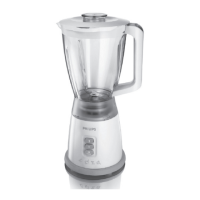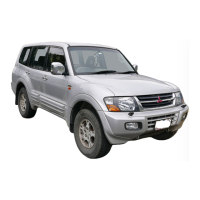25-8. Chapter 2 Part B
2.OL and 2.4L four-cylinder engines
8.14 Slip a screwdriver through the sprocket to prevent the
camshaft from turning - be sure to pad the gasket surface (arrow)
to prevent damage to the head
Abnormal wear (Fluffy canvas frberl
Senaratr
8.20 Carefully inspect the timing belt for the conditions
shown here
12 If you are unable to loosen the bolt due to the chain wrench slipping,
you can prevent the crankshaft from turning by havtng an assistant wedge
a flat-blade screwdriver in the flywheel/driveplate ring gear teeth. To do
this, you must first remove the flywheel/driveplate cover (described in the
transaxle removal procedures in Chapter 7).
13 Make sure the tensioner bolts are loose and slip the timing belt off the
sprockets and set rt aside.
14 If you intend to remove the camshaft, unscrew the camshaft sprocket
bolt and slide the sprocket off-a large screwdriver inserted through a hole
in the sprocket will keep it from turning while you remove the bolt (see il-
lustration). Also, remove the oil pump sprocket at this time and inspect
the oil pump seal for leaks or apparent damage.
15 Remove the plug at the left side of the cylinder block and insert a
screwdriver or a long punch to hold the Silent Shaft stationary (see illus-
tration). The screwdriver or punch should have an approximate diameter
of 5/16-inch and a length of 2 3/8-inches.
16 Loosen the bolt that retains the Silent Shaft sprocket.
17 Loosen the Silent Shaft belt tensioner (see illustration 8.8b) and re-
move the Silent Shaft belt (timing belt 8). Caution:
Donotattempttoloos-
en the sprocket bolt by holding the sprocket stationary with pliers.
18 If you intend to replace the crankshaft front oil seal, slrde off the crank-
shaft sprocket and the belt guide flange (if equipped) located behind the
crankshaft sprocket. When removing the flange, note the way it’s installed
(the chamfered side faces out).
lnspec tion
Refer to illustration 8.20
19 Rotate the tensioner pulley by hand and move It side-to-stde to detect
roughness and excess play. Visually inspect the sprockets for any signs of
4~ Front
Screwdriver.
[8 mm (3 in.) shaft)
8.15 A screwdriver Is used to keep the Silent Shaft from turning
as the oil pump is loosened
flmmg mark
(punch on sprocket)
i
Trmmg mark
(on cylrnder
head)
Trmrng mark
(notch m fiangP)
Tlmlng mark
(notch in sprocket)
8.22 Camshaft and crankshaft sprocket alignment marks
damage and wear. Replace parts as necessary.
20 Inspect the timrng belt for cracks, separation, wear,mtssing teeth and
oil contamrnation (see illustration). Replace the belt if it’s in questionable
condition.
lnstalla tion
Refer to illustrations 8.22, 8.23, 8.24, 8.25a, &?.25b, 8.29 and 8.30
21 Reinstall the timing belt sprockets, if they were removed. Note that the
camshaft sprocket is indexed by punch marks. Slip the belt guide flange
onto the crankshaft before Installing the lower sprocket-the chamfered
side of the flange faces out.
22 Align the timtng marks located on the camshaft, crankshaft and oii
pump sprockets with the marks on the cylinder head and the front case
(see illustration). Note: Different engines have different types of align-
ment marks. Some alignmenf marks are notches or raised arrows and
some-are punch mdentatrons. /dent& the exact type and location of the
alignment marks on each sprocket before contim@ the proced&e.
When aligning the oilpump sprocket marks, it is critical that the silent shaft
(if equipped) has the werghtedportion af the bottom of fhe shaft (it is possi-
b/e to align the marks wrth the Silent Shaft weight at the top; if you do this
accidentally severe
engme vibration will result). Before installing the tim-
ing belt, slightly rock the od pump sprocket by hand and watch carefully
that the sprocket has the tendency to remain stationary(return to apprti%i-
mate/y the marks-aligned position) when the sprocket is rotated. This
means the sprocket 1s CORRECTLY timed. If thg sprocket has the tenden-
cy to rotate clockwIse when spun Irghtly, the shaft is /NCORREC7?7
timed. If there is any doubt about whether or not the silent shaft is in the
correctposliion, Insert a screwdriver through the ho/e in the left side ofthe

